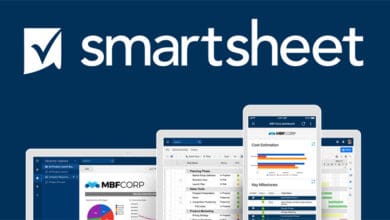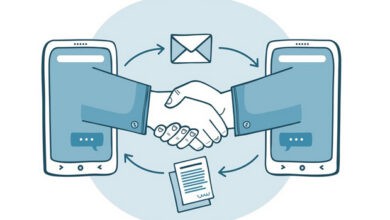
Are you feeling stuck in the era of paper? If you find yourself constantly distributing paychecks, it may impede your business’s growth and expansion. Switch to paperless payroll and say goodbye to the stress of number crunching, tax management, and manual salary distribution.
Every business should consider digitizing its operations as a top priority. Staying stuck with paper won’t help you keep up with growing business needs and competition. Digitization enables seamless collaboration, worldwide accessibility, and streamlined automation to facilitate the growth of your business.
It is essential to prioritize simplicity and clarity when it comes to payroll. It becomes even more significant by eliminating human error and guaranteeing timely and accurate payments. Regrettably, many small businesses rely on manual pen-and-paper methods for managing their finances. Surprisingly, a significant number of large companies, about 18%, continue to rely on paper-based activities for their payroll process.
It’s time to make a change if you’re one of those. In this post, I will discuss the advantages of adopting a paperless payroll and guide you through a smooth transition.
What is a Paperless Payroll
Managing and automating payroll tasks electronically is known as paperless or digital payroll. It involves utilizing payroll software that typically features a centralized dashboard for tracking and managing employee work and salaries.
The software efficiently monitors attendance, work hours, deductions, extra work, tax, and other relevant information to calculate payroll automatically. In addition, it can handle your financial accounts and effortlessly distribute salaries to employees according to pre-established rules. Reporting and analytics are essential for tracking business expenses and developing strategies.
It’s important to note that time and work tracking is not typically included in payroll software. Most payroll software nowadays has this feature or can be integrated with other HR management systems for work tracking.
There are two primary categories of payroll software: In-House Payroll Software and Online Payroll Services.
In-House Payroll Software
As the name implies, this type of payroll software is installed directly on the company’s computers. The company’s HR team handles all management aspects, including data entry, software updates, customization, security, and other crucial tasks.
This system is commonly utilized by large corporations seeking complete data control and independence from third-party services for storage and security. It also needs a payroll staff with expertise to manage the system. ADP and Sage HRMS provide this software and various other HR services.
Online Payroll Services
These payroll services are cloud-based and ultimately control the business’s data. They will handle all the necessary calculations, taxes, compliances, and software updates/customization. They are typically budget-friendly and incredibly user-friendly, making them an ideal choice for small to medium businesses.
However, it relies on the quality of service the payroll provider offers. Your data is stored and managed by a third-party company, so you must completely control it. Paychex and Gusto are excellent examples of this type of service.
It’s important to note that many In-House Payroll Software providers also offer hybrid services. The company manages employee data while the software provider handles software updates, tax filing, and compliance. It provides both ease of use and secure data storage.
Digital Payroll Benefits
It’s important to note that there’s no need to compare paper and paperless payroll to determine which is more effective for your needs. There are numerous advantages to using digital payroll over paper-based payroll. However, it’s essential to understand the benefits you’ll gain by transitioning and how a paper-based system may hinder your business.
Here are the key advantages of implementing a paperless payroll system:
Saves Paper-Related Costs
Paperless payroll can help you avoid the costs of buying, processing, and storing paper. The payroll software conveniently deposits the salary directly into the employee’s bank account while securely recording the data in the cloud.
It’s Time Efficient
Calculating payroll for each employee and distributing paychecks can be overwhelming. This software eliminates the need for paper and streamlines the calculation process. Additionally, it can automatically send salaries promptly.
Prevents Human Error
Research indicates that many employees start looking for a new job shortly after experiencing two paycheck errors. Mistakes can quickly happen when manually entering data and doing calculations, which can cause financial discrepancies and even compliance problems. Misplaced or lost documents can be a frustrating addition to the already complex payroll process.
Our paperless payroll system simplifies the process by automatically entering all the necessary information and keeping track of employee work, ensuring accurate and timely payment for the work completed. Validation checks and error notifications help reinforce this. Additionally, it maintains an in-depth log of transactions and modifications to resolve any concerns swiftly.
Makes Tax and Compliance Easy
Managing paper documents requires you to stay updated on compliance laws and handle tax filing independently. We know the challenges of staying updated on constantly changing regulations and ensuring timely and accurate tax filing.
Rippling is an excellent example of a payroll system that seamlessly integrates with tax filing systems and includes automated compliance checks. They can efficiently handle and submit all necessary documents to ensure compliance and avoid potential legal complications or penalties. Reporting features are helpful for compliance audits.
Easy Error Resolution
Resolving errors and conflicts through manual cross-referencing can be quite burdensome, as you can imagine. This becomes even more problematic when a document is lost or harmed. Payroll software typically includes integrated tools that simplify analysis and reporting. Navigate through data efficiently using the search features to resolve any issues quickly.
Boosts Employee Satisfaction
Physical paychecks may experience delays in distribution and need more detailed information regarding deductions or changes in compensation. Employees can easily manage their accounts with payroll systems. The employees can easily access pay information, tax forms, and historical data whenever needed.
It also aids in resolving errors, as any problems can be easily communicated through the self-service portal and resolved using precise data.
Paperless Payroll is More Accessible
Accessing papers can be challenging due to their specific physical locations, making it inconvenient for authorized individuals. It can be difficult to make timely decisions when information is not easily accessible. Cloud-based digital payroll systems store all data in the cloud, allowing authorized individuals to access it anywhere in the world, anytime. Just an internet connection is all that’s required.
Offers Better Security
Physical documents are at a higher risk of being stolen or lost, which can jeopardize sensitive employee information, such as social security numbers, salary details, and tax-related data.
Payroll software securely stores data in encrypted vaults and implements strict access controls to protect sensitive information. Another security feature commonly used to protect employee data is multi-factor authentication.
Since the data is stored in the cloud, it is protected from natural disasters. You can implement your own cloud data protection solution for enhanced security.
Scalability
One of the critical advantages of transitioning to a paperless payroll is the ability to quicklyscale your business easily. It allows for a seamless workforce expansion without additional resources to handle payroll. Input the employee information, and it will be seamlessly integrated into the payroll system.
Environment friendly
Additionally, it contributes to the preservation of the environment. Using paper has negative impacts on the environment throughout its lifecycle. Transitioning to a cloud-based payroll system will have a minimal environmental impact and enhance the company’s reputation among employees.
Paperless Payroll Challenges
Undoubtedly, the transition to a paperless payroll will pose some challenges, especially with implementing cloud-based payroll management. Here are a few common challenges that businesses often encounter when using digital payroll:
1. Some employees might be hesitant to embrace the change as it involves signing up and managing their accounts on the payroll service. Technical knowledge gaps and privacy concerns may also contribute to the issue.
2. Initial expenses are involved since you must purchase the payroll service upfront. Training employees can come with its costs.
3. If you’re worried about the security of your business data being in the hands of a third party, we understand your concerns. For small businesses that are just converting, it is not recommended to use In-House Payroll Software. However, there are other options available.
4. All employees must have a bank account to make direct deposits. Only some people have a bank account.
5. While enhancing the security of your data, it also exposes it to potential global cyber threats. Make sure you’re prepared to tackle that challenge.
6. As you manage employee data in the cloud, you must be aware of new compliance laws, such as the rules under GDPR or ERISA.
7. Technical issues can sometimes impact payroll processing, even though the service provider typically handles them.
8. Transitioning data to the cloud may pose some initial challenges.
9. Selecting the appropriate payroll software can be a daunting task. Ensuring that it provides all the necessary features for your business’s payroll system is crucial. These payroll software options are ideal for startups switching to paperless payroll.
Digital Payroll Best Practices
If you’re considering switching to digital payroll, here are some tips and best practices to make the transition to paperless payroll easier:
1. Ensure clear communication with employees regarding the transition and discuss the advantages it brings to both the company and its employees. Offer training as needed.
2. Make the transition smooth by eliminating paperwork to track employees’ work progress and encouraging employees to receive payment through the self-service portal.
3. Ensure the security of your data by going beyond the features provided by the payroll software. As previously stated, utilize cloud data protection software and provide online security training for employees.
4. If you are currently utilizing HR management software, ensuring that your payroll software is compatible and seamlessly integrates with it is essential.
5. While manual controls are available, automating the payroll system is recommended to minimize errors.
6. It is essential not solely to rely on the payroll software for compliance checks. Make sure to conduct your search to ensure that everything is noticed.
7. Make the most of the analytics tools that are already included. They offer valuable insights into employee productivity.
8. Many well-known payroll service providers offer dependable support teams. Feel free to reach out to them for any technical assistance you require.
Closing Thoughts
As your business expands, transitioning to digital payroll will become necessary. A paper-based setup has its limitations. Take action now and transition to a digital payroll system to set your business up for growth and expansion.
If you need help with upfront costs, consider using a free payroll service like Payroll4free. A free payroll system may lack robustness and display ads, but it will effectively handle automatic payroll processing and compliance.



